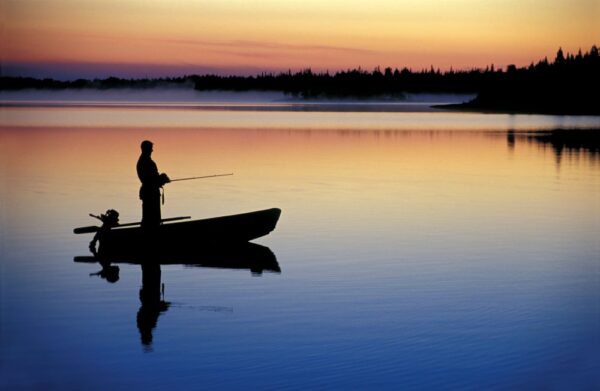Fishing etiquette is the foundation for respectful and enjoyable angling—whether you’re fly-casting in Alaska’s glacial rivers, poling through Belize’s clear flats, or teaching your kids to fish off a Minnesota dock. Following good fishing etiquette ensures a positive experience not only for you but also for the local community, wildlife, and fellow anglers. It’s about more than following rules—it’s about embracing a code of respect no matter where your fishing journey takes you.
For families discovering a new hobby, solo travelers pursuing tranquility, or seasoned anglers chasing trophy fish around the globe, understanding fishing etiquette enhances safety, enjoyment, and cultural sensitivity every step of the way.
Give Others Space: Maintain Courtesy on the Water
One of the most important principles of fishing etiquette is respecting personal space. Crowding others reduces their chance of success and can lead to unnecessary tension. In busy areas like Montana’s Bitterroot River or Florida’s Lake Okeechobee, it’s best to keep at least 50 feet of space between anglers in freshwater—and up to 100 feet in saltwater environments.
Fishing piers, such as those in Santa Monica or Galveston, often get crowded. Keep your gear organized and out of walkways. If kids are fishing with you, teach them to avoid other people’s lines and equipment. It’s a perfect chance to combine family bonding with valuable lessons in courtesy and local awareness.
Follow Local Regulations—and Local Wisdom
Fishing etiquette means honoring the rules specific to your location. These might include gear restrictions, catch limits, and seasonal closures—all designed to protect ecosystems. In Yellowstone National Park, for example, barbless hooks are required and native trout must remain in the water. In Thailand’s pay-to-fish lakes, specialized bait or equipment may be mandatory.
Before casting abroad, connect with local guides or angling communities. In places like Norway’s Lofoten Islands or New Zealand’s South Island, local traditions deeply inform fishing practices. Hiring a guide not only keeps you legal and safe but also opens doors to local culture and hidden fishing spots.
Conservation Counts: Handling and Keeping Your Catch Responsibly
Fishing etiquette extends beyond the hookset. When releasing fish, keep them in the water as much as possible, use knotless nets, and always wet your hands before touching them. Release fish facing upstream so they recover naturally. These practices are not just kinder—they’re more effective.
If keeping your catch, respect local harvest limits and regulations. Areas like Minnesota’s North Shore enforce tight controls to protect vulnerable species like walleye and lake trout. Only take what you intend to eat, and never dispose of remains near docks or walkways. Teaching children these habits turns a fun day on the water into a lesson in conservation and responsibility.
Embrace the Quiet: Sound Discipline Matters
Part of fishing etiquette involves protecting the tranquil atmosphere anglers seek. Loud voices, music, or running children can disrupt both the fish and others on the water. In quiet places like Montana’s Gallatin River or New Zealand’s backcountry streams, silence is part of the magic—and improves your odds of a catch.
Use hushed tones, mute your phone, and treat the water as a quiet sanctuary. Teach young anglers that calm behavior helps everyone—and helps catch fish.
Clean Waters: Leave No Trace Behind
Respect for the environment is a pillar of proper fishing etiquette. Always pack out your trash—and consider taking a small mesh bag to collect litter others have left behind. Items like monofilament line can take centuries to degrade and pose serious threats to wildlife. Use recycling bins where provided, such as those at Oregon’s coastal piers.
Also, stay on designated paths and avoid damaging shoreline vegetation. Whether you’re casting in Alaska’s Kenai Peninsula, Costa Rica’s jungle waterways, or Itasca State Park in Minnesota, taking care of the surroundings is critical for preserving fishing spots for future generations.
On the Water: Best Practices for Boat Fishing
Fishing etiquette shifts slightly when you’re on a boat. Whether aboard a rental in the Florida Keys or on a guided trip in Baja California, keep safety and courtesy in mind. Avoid speeding through no-wake zones, steer clear of lines from trolling boats, and maintain respectful distances from anchored anglers.
If you’re anchoring in current-driven rivers like Idaho’s Salmon River, avoid blocking another boat’s drift. Communicate clearly using hand signals or radio contact. And at busy marinas, dock quickly, tie off properly, and don’t block access for others. These simple habits keep everyone safe and the fishing enjoyable.
Local Insights: Fishing with Cultural Respect
Some of the best fishing spots are off the beaten path—and locals often hold the keys. In Japan’s Okinawa, fishing alongside elderly residents during high tide fosters quiet connection. In British Columbia’s Haida Gwaii, Indigenous guides teach that marine life has deep spiritual meaning.
Engage earnestly and observe with humility. You’ll gain more than tips—you’ll expand your understanding of how fishing etiquette varies across cultures. In places like Lake Jocassee at South Carolina’s Devil’s Fork State Park, taking care of the environment earns the respect of local “watch groups” and ensures more productive, peaceful angling for everyone.
Patience and Generosity: The Heart of Fishing Etiquette
At its core, fishing etiquette is about respect—patience with nature, generosity toward others, and gratitude for every cast. Help untangle someone’s line. Offer bait to a beginner. Thank your guides and smile at fellow anglers, whether you’re surfcasting on North Carolina’s Hatteras Island or trolling Lake Bled in Slovenia.
The true reward of fishing isn’t always the biggest catch, but the shared humanity and connection it fosters. When you practice strong fishing etiquette, you protect the waters, honor their cultures, and contribute to a global community of ethical anglers.






